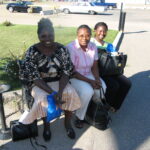Brief History of The Tangale People of Tangale Chiefdom
The Tangale people have been ranked among the first twenty-one major ethnic groups and languages of Nigeria, as documented in the country’s consulate in New York, United States of America.
Available corpus reveals that the Tangale people of present-day Nigeria initially migrated from somewhere in the Far East. It is believed that they started their migration from Yemen, came through Egypt, and finally arrived in Nigeria through Birnin Ngazargamu, the capital of the old Kanem Bornu Empire.
The exact period of migration of the Tangale people from the Far East is unknown. However, it is widely suggested by some scholars that it could have been sometime between the 7th and 11th centuries when there was a mass movement of groups of people from the Mediterranean Region through North Africa and the South Sahara Region.
Also, it is widely suggested that the period of the arrival of the Tangale people to their present settlement might have been sometime between the 13th and 15th Centuries. It is generally believed that their migration from around Birnin Ngazargamu was due to some crisis that took place in the old Kanem Bornu Empire, which led to the movement of some groups of people during the period. One of the British Colonial Officers who wrote a brief account of the Gombe Division referred to the Tangale people as being the first to have occupied that area. Similarly, a German writer, Mr. Wiesbaden vividly disclosed that “The Tangales” were the earliest known dominant occupants of the old Gombe Emirate. Furthermore, Mr. A.B. Mathews, one of the British Colonial Officers who served in the area stated that Tangale people had occupied the present Gombe Emirate long before the Fulani Jihad in parts of Northern Nigeria broke out.
The Tangale people had since pre-colonial times been one of the independent kingdoms ruled by powerful traditional heads with the assistance of palace courtiers. The oral account revealed that they had their overall traditional head known as Mai Yelli (Now Mai Tangle) from the Billiri clan whom other lesser “Mais” in the land owed allegiance to. Before the advent of the Billiri colonial occupation of Tangale land in 1906, it is believed that these natural rulers of the Tangale kingdom had ruled for about five or six centuries.
The natural rulers of Tangale of pre-colonial times ruled with the advice of some prominent and very influential palace courtiers. These palace advisers were collectively referred to as ANAN-KWAD MAI, (meaning the privileged beneficiaries of the king). There were however, two exceptions of these advisers whose individual roles had been defined as ANKAKNU and LAU WOTEN MAI or KANJERO, meaning WAZIRI and GALADIMA respectively in Hausa lands.
Adapted from diltangle.com






